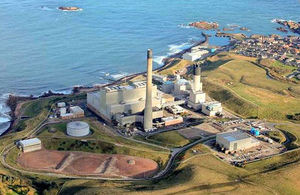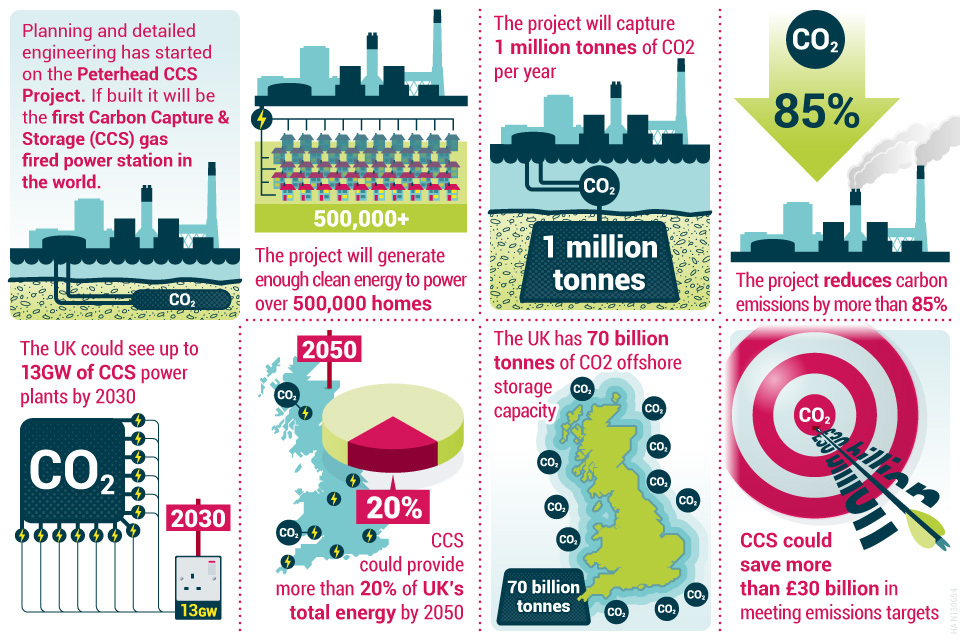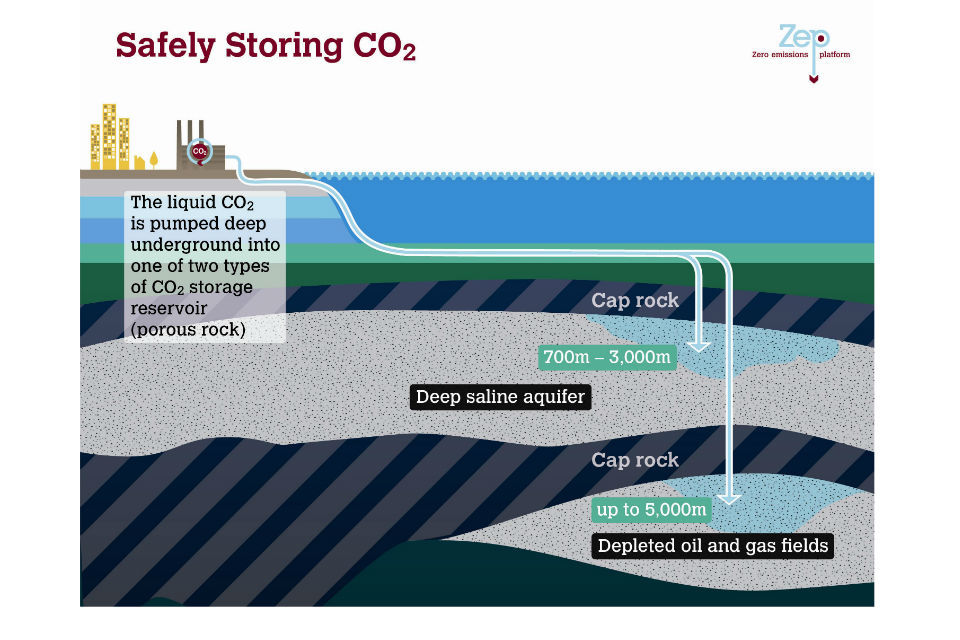Peterhead Carbon Capture and Storage Project
Government announces FEED study funding for the Peterhead Carbon Capture and Storage (CCS) Project, as part of the CCS Commercialisation Competition.

Peterhead power station
Edward Davey is at Peterhead today announcing funding for the next stage of Shell’s Peterhead CCS project.
Find out more:
The FEED study will allow a detailed programme of engineering, planning and financial work to finalise and de-risk all aspects of the proposal ahead of taking the final investment decisions.
Peterhead power station
The Peterhead power station is a Combined Cycle Gas Turbines (CCGT) station owned and operated by Scottish and Southern Energy near Peterhead in Aberdeenshire.
Peterhead is situated on the coast, and lies close to available pipelines that can safely transport CO2. The Goldeneye depleted gas field is about 100km offshore in the North Sea.
The Project will investigate capturing more than 85% of CO2 emissions that would otherwise be emitted to the air; this CO2 will then be transported by pipeline to the Goldeneye platform in the North Sea for storage in a depleted gas reservoir about 2.5km below the sea bed.
The UK and CCS
The UK is a global leader in CCS, progressing the next stage of the world’s first gas CCS project which if built could capture 1 million tonnes of CO2 each year and provide clean electricity for more than 500,000 homes.
In December 2013, the Secretary of State announced support for the White Rose CCS project to develop a new state-of-the-art clean coal power plant with full carbon capture and storage.
The Government is investing around £100m in the White Rose and Peteread CCS projects.
By 2050, CCS could provide more than 20% of the UK’s electricity and save us more than £30bn a year in meeting our climate targets.

CCS infographic
The government is working with industry to create a new cost-competitive CCS industry in the 2020s. Our support for the development of CCS includes:
- a £1 billion commercialisation competition to support practical experience in the design, construction and operation of commercial-scale CCS
- a £125 million, 4-year co-ordinated research, development and innovation programme
- reform of the UK electricity market so CCS will be able to compete with other low-carbon energy sources
How CCS works

How CCS works
Once developed at scale CCS could:
- allow the safe removal and permanent storage of carbon dioxide emissions from coal and gas power stations
- remove and permanently store emissions from large industrial sources such as steel or cement factories
The technologies used in CCS (capture, transport and storage) aren’t particularly new or unique. They have been used for many years individually (notably in the oil and chemical sectors) but to bring down costs and allow CCS to be more widely used, the full chain of capture, transport and storage needs to be built and operated on a commercial. Boundary Dam in Canada is likely to be the first coal power station in the world to operate with commercial scale CCS. The Peterhead CCS Project could be the first gas power station in the world.
Links
- Peterhead press notice
- Ed Davey blog on the opportunities for the UK for CCS
- White Rose website
- Yorkshire and Humber CCS Trunkline (CO2 transport and storage infrastructure)
- Drax press notice
- National Infrastructure Plan
- Find out more about Carbon Capture and Storage